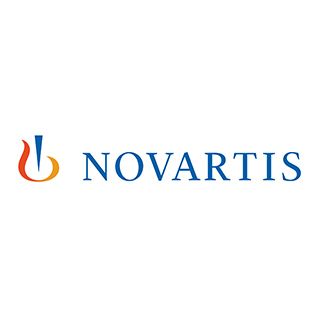Article
Phase 3 Secukinumab Data Supports EC Approval for Patients with JIA, ERA, JPsA
Author(s):
Novartis announces the EC expanded on the approval of secukinumab in EU to include pediatric patients with childhood arthritic conditions: juvenile idiopathic arthritis, enthesitis-related arthritis, and juvenile psoriatic arthritis.

The European Commission (EC) has approved secukinumab alone or in combination with methorexate for juvenile idiopathic arthritis (JIA) enthesitis-related arthritis (ERA) and juvenile psoriatic arthritis (JPsA) for pediatric patients (aged 6 years or older) who had inadequate response or intolerance for conventional treatment.
Secukinumab is the first and only fully human biologic that works by directly inhibiting interleukin-17A (IL-17A). Even though there are approximately 2 million children worldwide living with some form of this condition, there are limited treatment options for juvenile idiopathic arthritis.
The approval was supported by positive results from the Novartis phase 3 JUNIPERA study evaluating the effect of secukinumab (Cosentyx) on pediatric patients with these subtypes of juvenile idiopathic arthritis. This decision expanded on approvals in EU based on the known safety profile across other adult and pediatric indications.
The US Food and Drug Administration (FDA) had approved the treatment for these designations in December 2021 based on these data. Secukinumab has been approved for adults since 2015, and in that time has been used as treatment for more than 700,000 patients globally across multiple inflammatory conditions.
“Cosentyx adds to the body of other approved treatments that may provide children and adolescent patients, with the opportunity to participate in all daily activities, and even sports,” Ivan Foeldvari, MD, Hamburg Centre for Pediatric Rheumatology, Germany, said in a statement.
The Clinical Trial
The 2 year, double-blind, placebo-controlled, randomized-withdrawal, phase 3 study consists of 3 parts. The extension study, which is not yet published, focused on the long-term efficacy, safety and tolerability of secukinumab for up to 4 years in patients with JPsA and ERA.
After enrolling 86 children and adolescents aged 2-17 years with a diagnosis of either enthesitis-related arthritis or juvenile psoriatic arthritis, Hermine Brunner, MD, of Cincinnati Children's Hospital Medical Center, led the investigation on the drug's efficacy and safety for these specific subtypes of juvenile idiopathic arthritis.
The published data followed patients who received the open-label drug through 104 weeks and eventually compared with placebo. During the first treatment period of 12 weeks, patients who weighed less than roughly 110 lbs (50 kg) received 75 mg doses while those weighing above that received 150 mg doses.
Those who achieved a response of at least JIA ACR 30 within the first 12 weeks progressed onto the second treatment period where patients were randomized to either continue receiving secukinumab or placebo. From this point, responses were observed through Week 104.
Primary and Secondary Endpoints
Investigators assesed the patients' time to flare in the second treatment period (Week 12-Week 104) as the primary endpoint. By inhibiting IL-17A, secukinumab blocks a cornerstone cytokine that's responsible for the inflammation and development of several rheumatic diseases: plaque psoriasis, psoriatic arthritis (PsA), ankylosing spondylitis (AS), and non-radiographic axial spondyloarthritis (nr-axSpA).
The secondary endpoints assesed in the first treatment period (up to Week 12) consisted of the evaluation of JIA ACR 30/50/70/90/100 responses, and each JIA ACR core component, change from baseline of the Juvenile Arthritis Disease Activity Score (JADAS), and total enthesitis and dactylitis count.
During the second treatment period, the secondary endpoints included the effect of withdarwing secukinumab treatment in relation to responses of JIA ACR 30/50/70/90/100, as well as inactive disease; secukinumab concentration; safety/tolerability and immunogenicity of the treatment.
The Positive Phase 3 Data
Safety in these pediatric populations are consistent with the known safety profile of secukinumab for the treatment of plaque psoriasis, PsA, non-radiographic axial spondyloarthritis and ankylosing spondylitis.
The cumulation of the 2-year data achieved the primary endpoint of the trial which demonstrated secukinumab significantly delayed time to flare in patients receiving the drug compared with placebo. The delayed time to flare was observed in those with juvenile psoriatic arthritis as well as those with enthesitis-related arthritis.
The secondary endpoints were also met. Sustained efficacy for secukinumab was observed with more patients achieving and maintaining the JIA ACR 30 and JIA ACR 70 responses from Week 12-Week 104 comapred with placebo. The safety profile secukinumab demonstrated was favorable with no new safety signals reported in pediatric patients (2-17 years of age) over the 2 year treatment period.
“Both JPsA and ERA are progressive, chronic, debilitating diseases with limited treatment options," Brunner said in a statement. "JIA can impact the daily lives of children and teenagers, with over 30% of children with JIA finding it difficult to attend school due to their condition, and many children still having active disease as adults."





